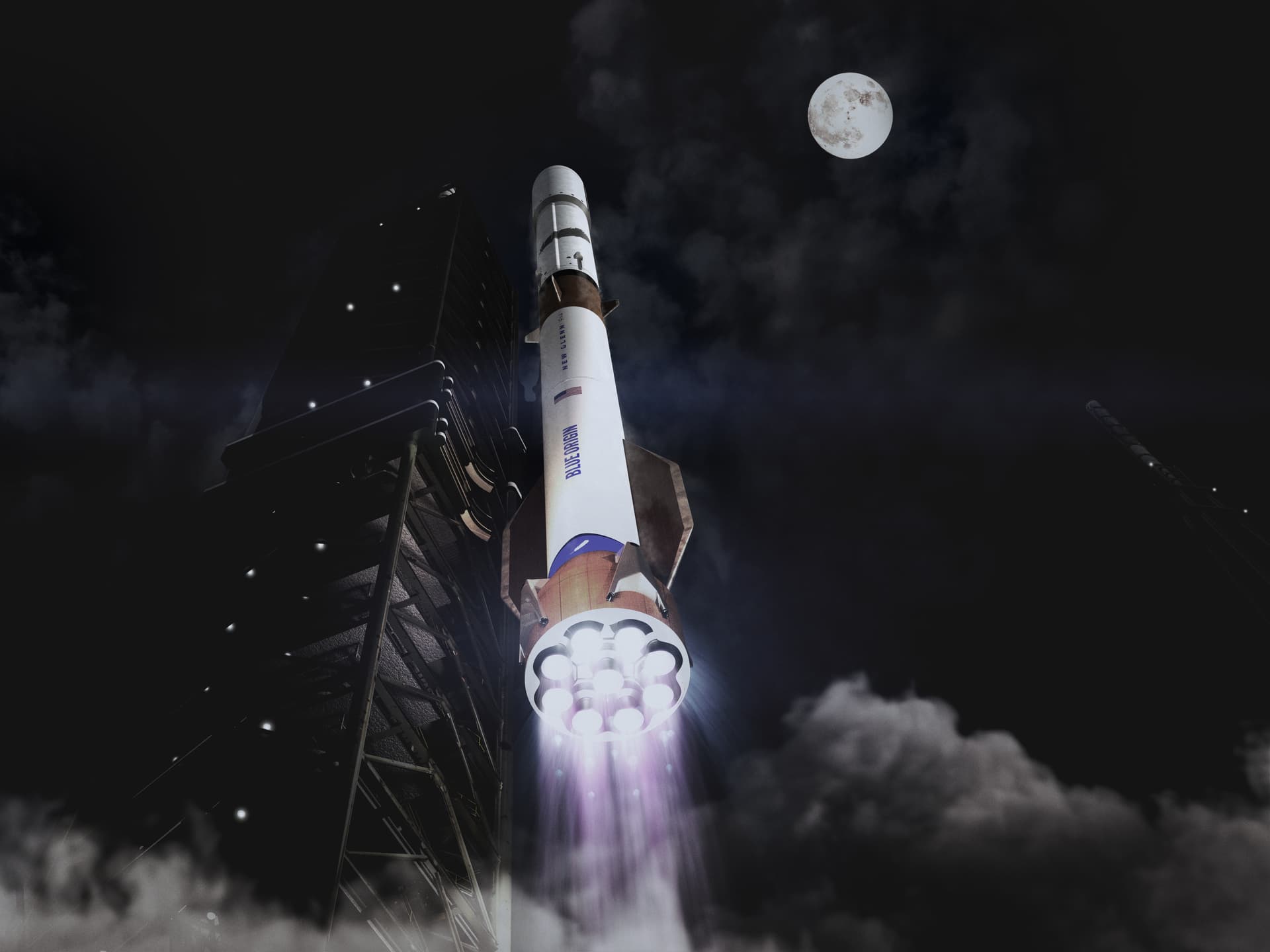Blue Origin has reached a significant milestone with the successful launch of its New Glenn rocket, a heavy-lift vehicle designed for a range of space missions. On November 13, 2023, during its second flight (NG-2), the company launched the NASA ESCAPADE (Escape and Plasma Acceleration Dynamics Explorers) mission, which aims to study how solar winds interact with Mars’ magnetic environment. This launch included the retrieval of the rocket’s first stage, demonstrating Blue Origin’s commitment to partial reusability.
The successful launch marks a pivotal moment for Blue Origin as it outlines plans to enhance the New Glenn rocket’s capabilities. In a statement shortly after the launch, the company detailed upcoming improvements in structural design, propulsion, avionics, and reusability. One of the most notable developments is the intention to create a “super-heavy” version of the New Glenn rocket, designed to compete directly with SpaceX’s Starship.
Innovations in Propulsion and Design
The New Glenn rocket currently utilizes seven BE-4 booster engines, which generate a total thrust of approximately 16,800 kN (3.5 million lbf) at sea level. With the planned upgrades, each BE-4 engine will reportedly produce 2,847 kN (642,850 lbf) of thrust, elevating the total thrust to 19,928 kN (4.5 million lbf). Blue Origin has already demonstrated capabilities of up to 2,780 kN (625,000 lbf) on the test stand, indicating the engines are on track for these enhancements.
In addition to the BE-4 upgrades, the BE-3U thrusters, which power the upper stage of the New Glenn, will be enhanced to deliver 1,779 kN (400,000 lbf) of thrust, an increase from the original design of 1,423 kN (320,000 lbf). The integration of these advanced thrusters is expected to occur over the next few missions, further bolstering the rocket’s performance.
The upcoming super-heavy variant, designated as New Glenn 9×4, will feature a larger payload fairing, measuring 8.7 meters (28 feet 6.5 inches) in diameter, compared to the current 7-meter (23-foot) fairing. This new configuration will allow the rocket to deliver 70 metric tons to Low Earth Orbit (LEO), 14 metric tons to Geosynchronous Orbit (GSO), and 20 metric tons to a Trans-Lunar Injection (TLI), facilitating missions beyond Earth.
Strategic Partnerships and Future Missions
Blue Origin’s advancements come as the commercial space launch market continues to grow, with projections estimating it will reach $35.95 billion by 2030. The company aims to remain competitive amid increasing challenges from various commercial launch providers that have emerged over the past decade.
In addition to its rocket developments, Blue Origin is set to contribute to NASA’s Artemis Program, specifically for the Artemis V and VI missions. As the agency reassesses its future space exploration plans, recent budget proposals indicate potential shifts away from traditional launch systems like the Space Launch System (SLS) and Orion spacecraft. This may lead NASA to rely more on commercial partnerships for its launch and crewed spacecraft needs.
Moreover, acting NASA Director Sean Duffy has announced that the agency will seek competitive bids for a Human Landing System (HLS), citing delays in SpaceX’s Starship development. Blue Origin is also eyeing additional contracts with NASA for deep space exploration missions similar to the ESCAPADE project and national security initiatives such as the Golden Dome program.
As Blue Origin navigates this competitive landscape, its focus on innovation and collaboration with NASA positions it well for future endeavors in the rapidly evolving space industry.







